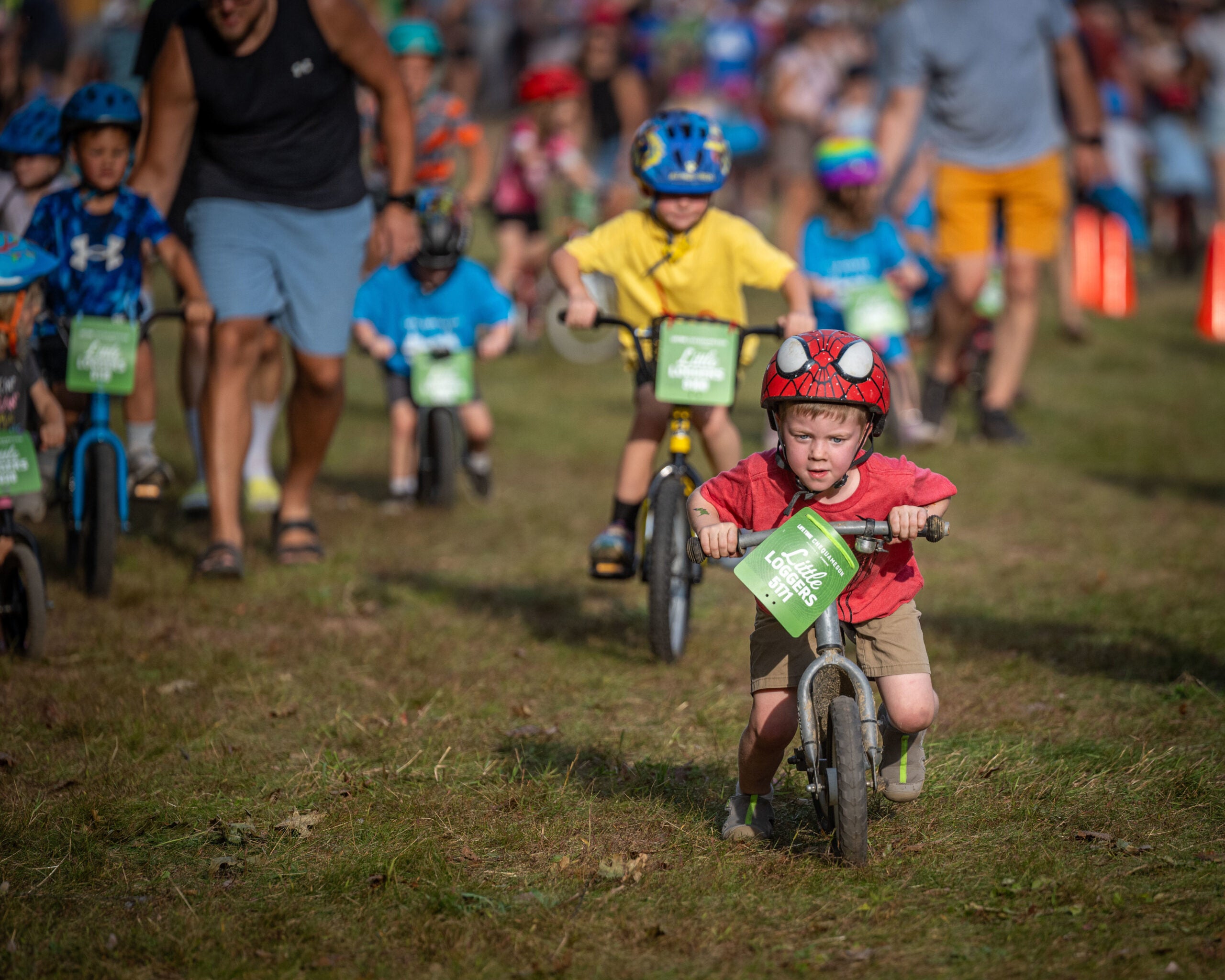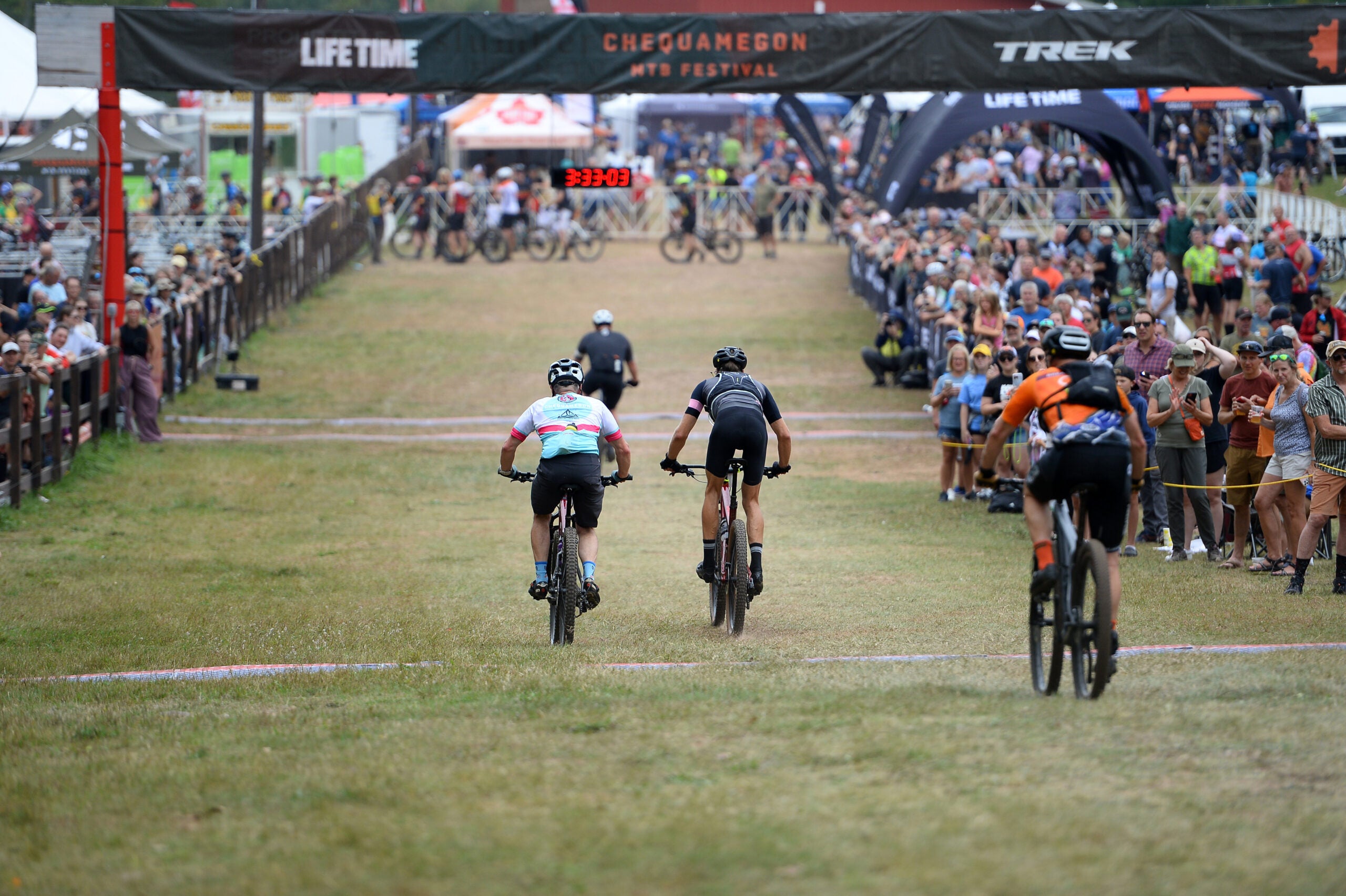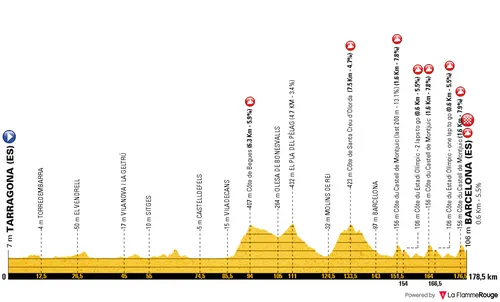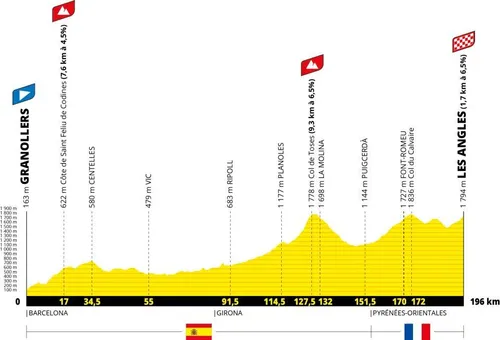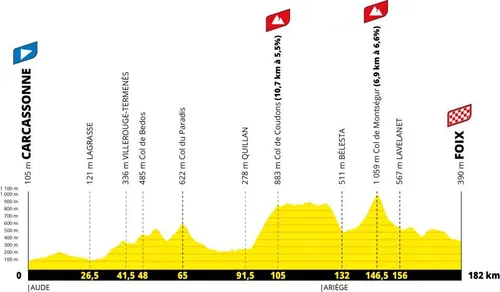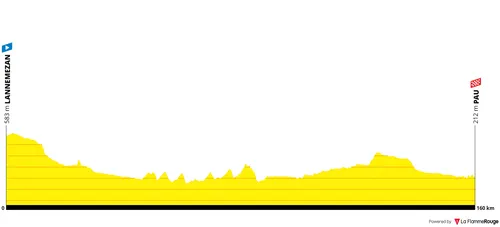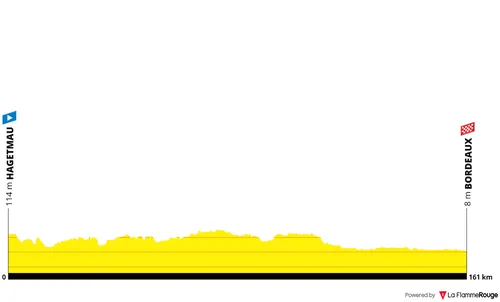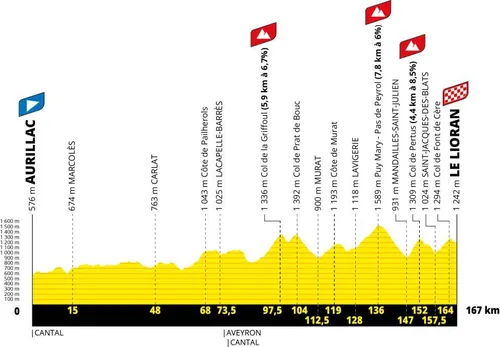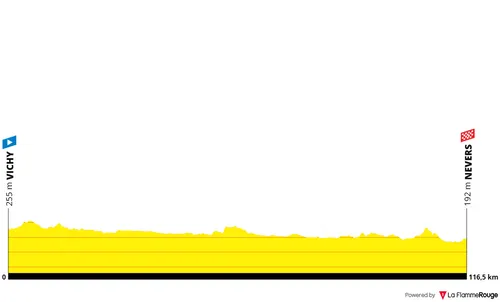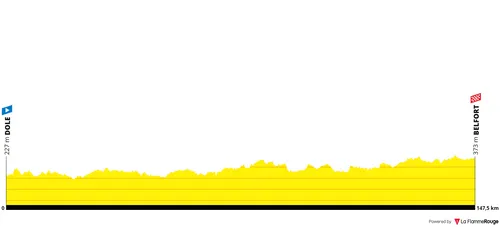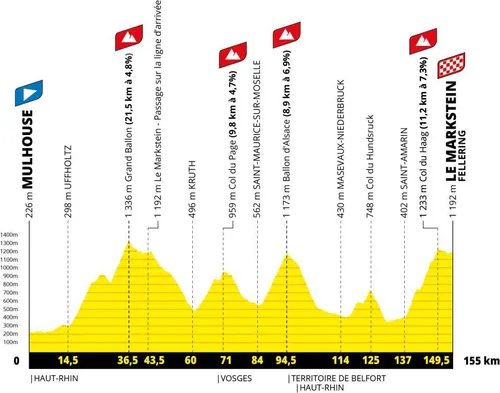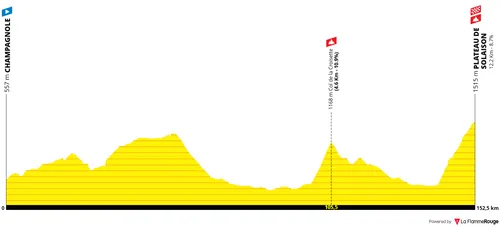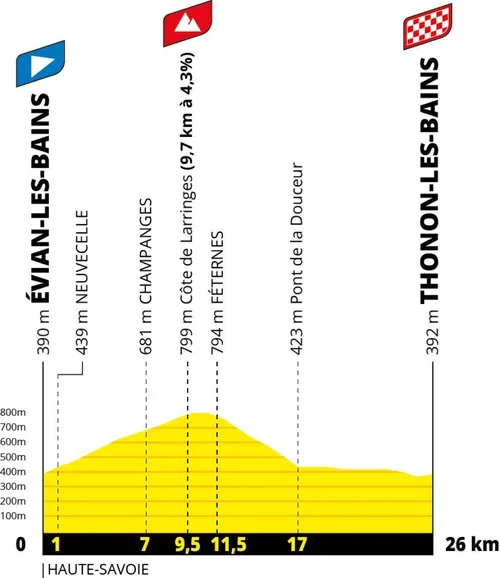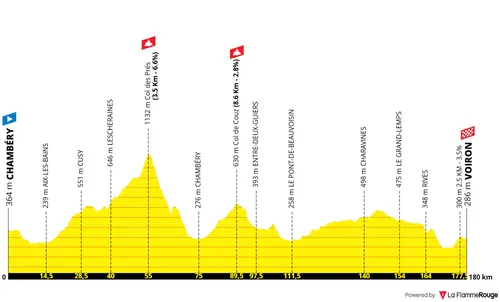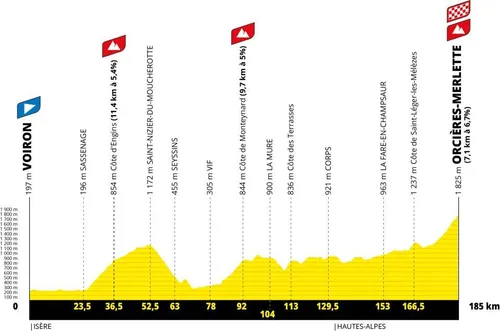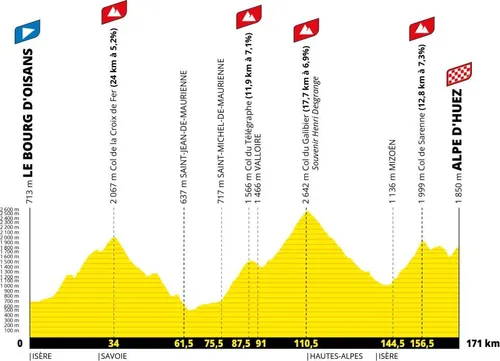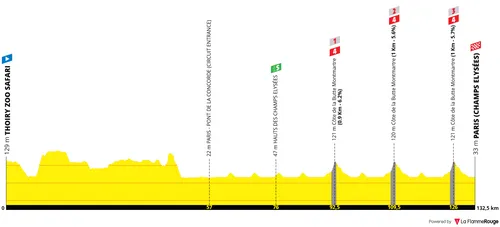This article was first published in Issue 138 of Rouleur
It was later described as post-apocalyptic. Dozens of people scattered over the mountainside, souls stripped bare, legs, eyes and spirits deadened. Despite our close proximity to each other, the silence was stark. No more space for words, our earlier camaraderie suffocated by the depths of the darkness we each found ourselves in. A communality only in the shared experience of battling our own personal version of hell. As I forced each impossible grind of the pedal, the only sound around me was of forced, pained breath, and the quiet rattle of chain on almost-stopped wheels; or the clack of cleats on uneven tarmac, iron-legged prisoners doubled over, pushing bikes up this godforsaken climb as helplessly as Sisyphus laboured under his boulder. Both endeavours were seemingly endless, both far from any hope of glory. This wasn’t as bad as I had feared. It was much worse. This was the Col de la Madeleine.
It was my first attempt at taking on an Hors-Catégorie climb. It came at the end of the Étape du Tour de France Femmes avec Zwift, and 100 kilometres and five hours after taking on my first ever Category-1 climb. If attempting two mammoth firstevers in a single day seemed like a big ask, bordering on the ridiculous, my only defence was ignorance. How do you know how difficult something will be unless you try? How do you find the outer edges of your limits unless you force yourself to push through what was there before?
As I reached the banner announcing another 15 kilometres of climbing to come, another 15 kilometres before this mental and physical agony ended, I stumbled off my bike in anger. I raged at my reckless belief that nothing would truly get the better of me. I cried so hard I could barely breathe. Hyperventilating, gasping for air, desperation leaking through my eyes and nose. I was vaguely aware how ridiculous I must have looked. Pathetic even. But I didn’t care. I had no space for caring. My head was filled with how impossible this felt, and how stupid I was for putting myself in this position in the first place.

I had agreed to attempt the first ever Étape of the Tour de France Femmes avec Zwift a few months earlier. It was a chance for amateurs to ride the Queen Stage of the race just hours before the pros, and felt symbolic of how far the race had come. How far the sport had come. I barely hesitated when offered the opportunity to support, and thought I could use my small platform to leverage a crack in the gates that sometimes keep this sport contained.
I have always taken pride in not feeling a need to sign up to the Lycra brigade to share a passion for cycling. But maybe this was a way to show that you don’t need the wardrobe of matching kit, the Strava PRs, the carefully edited drone footage, to belong. Perhaps I could prove that anyone with a half-decent level of fitness could take on a challenge of this magnitude, even with kids, a busy job and an already ram-packed 24 hours in the day. Maybe, even as an avowed outsider, I could claim a messy, imperfect spot on the inside, and make more room for others. Yet, even as I said yes to the challenge, I was fully aware that if I had known how difficult the ride would be, I would surely have said no. Ignorance was my superpower, my protective cloak, my downfall.
I was a perfect guinea pig in my own experiment. When I signed up for the Étape, I didn’t own a road bike. I hadn’t owned one in four years, since I was knocked off by a hit-and-run scooter, and I wouldn’t take possession of one until two short months before the ride. I was going to have to do almost all of my training for the three-and-a-half thousand metres of climbing, spread over 117 kilometres, either on an indoor trainer, or in the Netherlands where I live. The highest point of altitude in the region surrounding my home city of Amsterdam, Noord-Holland, is a dune called Schoorlse Nok. It measures 57 metres of altitude. I never made it to Schoorlse Nok.
My first Zwift ride was less than five months before the Étape, and I was sick with nerves. The session lasted 30 minutes and, like much of my early training rides, was done in Converse trainers and with a baseless sense of optimism. This wasn’t a standing start, it was a start from the back of the neutralised zone.
And yet, it was precisely these thoughts that had nostalgically kept me company at various points on the run-in to the Madeleine. After surviving the Category-1 Col de Plainpalais at the start of the day, and the wet descent that followed, I rode into gratitude for my ignorance. On the 80 kilometres of relentlessly undulating road between the two major climbs, I gradually found my groove despite the pouring rain. Sure, this was hard, sticking to my friend Rhian’s wheel on the flat, keeping the tempo she had set for me on the climbs to be able to make the time cut, but it was a version of hard that I could handle. Just about.
The Hungarian-American psychologist Mihaly Csikszentmihalyi wrote of the concept of flow as the secret to happiness. Flow is the state of concentration and absorption found in tasks that lie on the outer edges of one’s abilities. He described it as being completely involved in an activity for its own sake. “The ego falls away. Time flies. Every action, movement and thought followed inevitably from the previous one, like playing jazz. Your whole being is involved, and you’re using your skills to the utmost,” he wrote.
I had felt this sense of flow a number of times in training, when I had gone past the point of pain, when the physical effort had finally silenced the doubting mind, when there was nothing to do but ride. Like a pedalling monk. On endless loops of Richmond Park on a Tour de France rest day, on the beautiful, biting climbs from Puerto Pollensa in northern Mallorca, to the cyclist’s pilgrimage of the Formentor Lighthouse, and again on the Category-2 climb of the Étape that came 20 kilometres from the foot of my ultimate tormentor; I understood peace through hardship, the privilege of self-inflicted pain.
On that long stretch of road, I could be grateful for Rhian riding up front, a friend who hadn’t hesitated when asked whether she would take this on with me, acting as domestique, sports director and therapist all in one. I could appreciate the enthusiasm of my friend Charlotte, who was equally quick to join the ‘fun’ and endured months of 15-minute voice notes pinging between Amsterdam and her home in Brussels, updating on training, life and everything in between. There was the long weekend with friends in the Alps, ostensibly to celebrate my husband’s birthday, but which quickly became a training holiday for anyone who wanted to bring kit and share the joy of riding on crisp, spring roads together. There were rides with Matt Stephens, Dani Rowe, Courtney Knott and many others; experiences I wouldn’t have even contemplated had I not been committed to this challenge. Even a last-minute family holiday to Mallorca, thanks to the kindness of my friends Ralph and Helen, was only booked and enjoyed because of the mountains I knew I could train on. As I rode in Rhian’s wheel, putting on and taking off gilets and arm warmers, until we decided that wet skin would dry more quickly and we may as well stay drenched for the day, I could be thankful for all of it.
But then, came the lower slopes of the Col de la Madeleine. My delight at making the time cut thus far, at surviving everything the day had thrown at us, at managing to enjoy whole chunks of the ride even… all blew to pieces within a few short, very, very long kilometres. First, the slow realisation that the side of the mountain we were climbing was not, in fact, the version I had completed on Zwift. It was not the side I had driven up and down a few times in real life, getting a feel for when the gradient would offer some respite. With a growing horror and confusion I realised that the false flats I was holding out for were not, in fact, coming. There was no relief around the next corner, only more climbing. More and more climbing.

On this brutal grind lay the ghosts of the darker side of my training, the memories I had chosen to overlook for most of the day. There were the multiple attacks of angioedema, an auto-immune condition which swells my lower face and can be fatal, on one occasion necessitating a 4am ambulance call-out because of an out-of-date EpiPen and a stubbornly nlarging tongue that threatened to block my airways and end it all. There were the weeks of double Zwift sessions in a dingy west London bedsit, hired for the three weeks of the Giro d’Italia over the relative luxury of a hotel room, because the small kitchen/living room was just large enough to absorb a training bike and an indoor trainer. There was the burnout which delivered its body blow on a 3:30am alarm call taking me from that last-minute holiday-cum-training camp in Mallorca, to London, for another 18-hour day of filming and travelling. It was a burnout that had actually been building for six months by then, even before the training, and which had only been exacerbated by it; a burnout that would take several dark weeks to level off, and much longer to recover from. Why hadn’t I seen, through any one of those episodes, that it was all too much? Why hadn’t I listened to those voices inside my head? The ones that had consistently scoffed that I couldn’t do this, that this kind of endeavour was for people other than me, that the only guaranteed way to avoid failure was by not trying in the first place. Okay, so the self-talk was negative, but surely that’s because I know myself best? If my inner voice is telling me I can’t do something, maybe it’s the voice I should be listening to? It has all the data points, the researched experience, the full range of my abilities to hand?
As I cursed all the choices that had brought me to this point, I realised I had little choice but to get back on the bike and keep pedalling. The professional peloton was due after us, so there would be no moving from this road for hours yet. And I was freezing. And wet. So, for another agonising, excruciating eight kilometres I repeated the same routine. Get on the bike and pedal as slowly as was possible without falling off, for as far as I could. Clamber to a halt when I could no longer force either quadricep a millimetre further. Cry. Curse myself. Push my bike for as many inglorious, humbling metres as was necessary to re-find a drop of morale and a metre of flat. Get on and try again. I used every mental trick in my repertoire. I tried concentrating only on the effort of each pedal stroke, repeating in my head over and over again: ‘pedal stroke, pedal stroke’ until ‘pedal strooooo’ ground to a standstill all over again. I reminded myself that one day I wouldn’t be able to do this, and that today was not that day. It’s a mantra I use often, except that today felt very much like that day. I kept close the people who didn’t get this chance, my dear friend Richard who would never turn another pedal and in whose memory I tried to push. Until I felt unworthy of such company and again suffered alone.
Our final time cut-off came five kilometres from the top of the Col de la Madeleine, at a place called Saint-François-Longchamp. We had hired a small chalet in Saint-François for both mine and Rhian’s family, and they were all there waiting for us. Kids, husbands, dog. Or at least, we assumed they were. Our phones had long since been killed off by the torrential rain of the day so there was no way of calling to know for sure. My dream, my plan really, had been to ride in an agonised glory to the excited cheers of my kids, to give them a brief hug and to continue to the top of the mountain. I had visualised it so many times, it was as though it was a memory already. A huge part of my motivation for this ride had been to show them both that mummy does hard things, that they too can do hard things if they put in enough work, that nothing worth having comes easy. In my imagined scenario, I would continue on my way, cheers as wings on my back, before collapsing in tears at the top of the climb, my heart full of pride and a sense of achievement. The relief, the satisfaction, the vindication… I’d have done it. I’d have shown I could do it and that, by extension, anyone else could too. I had shared my journey so publicly, and the end result of all this pain and learning would be that final glory. Of course I was going to make it. Of course I was. What would have been the point otherwise?
Except, some two kilometres from Saint-François, Rhian calculated that we weren’t going to make the cut-off. We were not going to complete the ride. We wouldn’t get to ride the final five kilometres. DNF. If I thought my devastation was complete at the bottom of the climb, it was nothing compared to this heartbreak. I have struggled in the days since to recall another time I felt such a complete sense of failure, and haven’t managed to find one. It was as simple and final as that. I was a failure. I had failed. I had been beaten. All that bullshit hard work, all the bloody training, all the stress and the worry and the whole damned hullabaloo I had made around this climb, this ride, this day, it was all for nothing. Once again the struggle to breathe. Broken gulps for air amid the desperate sobs. I felt embarrassed, humiliated, angry. I wanted to be anywhere else but that goddamn mountainside and I wanted to throw my bike off the edge and sit on the wet road and huff. A good, old-fashioned feck-it huff. But Rhian reminded me we were only two kilometres away from the kids, and even though I now envisaged their disappointed faces and I imagined their questions, their confusion, their queries why mummy wasn’t able to do it, I nonetheless craved seeing and holding them. I needed to feel the safety of my family, to ride away from this darkness and back to my safe place. My home.
Even as the snotty tears continued to mix with the still-falling rain, I clambered back on that machine. I pushed one leg after another, I pedalled through treacle, and the mental clouds began to clear. Gently, slowly, I allowed myself to fully contemplate the scale of this challenge, in the timeframe I’d given myself. I allowed myself the grace of accepting that this was always going to be all-but impossible, given that I had only started riding my own road bike eight weeks before, with half of that time spent working the intensity of the men’s Tour de France. I forgave my legs for seizing up after taking on the hardest climb of my life, at seven o’clock that morning, without warming up and in the freezing dawn rain. Yes, I was finding this unimaginably difficult, but you know what? I was still here. I was still pedalling. This bastard had broken me over and over again and still I got up and pushed on. It had beaten me several times but still I was there swinging. So feck it, yes I could be proud. I HAD done it. I had made it up the Col de la Madeleine and I didn’t need the final five kilometres to tick any bloody box.

As I emerged through the mental mist, I could finally see Saint-François in the distance. The noise of the crowd drew closer, the blur of colour became sharper, the shouting more discernible. “Orla! Rhian! Orla! Rhian!” My husband was running towards us, cheering us on with such obvious joy that I broke all over again. “The kids are two bends up the road! They’re so excited to see you! Just two more bends.” His hand on my back, my whole being was comforted by the push I so desperately needed. They’re just up the road. I’m almost there. I’ve almost made it. I couldn’t even see their little faces as I approached, could only hear their voices screaming from behind the sodden signs they were waving as they jumped up and down. “Mummy! MUMMY! You did it!”
Even as I type, the tears fall again. My two kids, Rhian’s little girl, Seren, her husband Toan, my own husband sprinting up the road to join us… this was my finish line. This was my glory. Rhian could easily have made the cut-off if she hadn’t dedicated herself to getting me that far. I was overwhelmed with gratitude. For her, for my friend Charlotte who had jumped at taking on the ride just because I had suggested it, for our little band of cheerleaders, who had all taken the long road to the mountain to hang around in the rain for just that moment.
And I felt grateful for myself. For the sheer bloody-mindedness that had gotten me up to that point, and for the wisdom that allowed me to see what a huge success this was after all. All the shared experiences, all the lessons learned in the five previous months, all the self-talk that had to be overcome. I had pushed harder, gone deeper, dug into an abyss of reserves that I never knew lay below. I had taken on more of a physical challenge than I ever had before. And only a fool would call that a failure. And as I learned on the final slopes of that mountain, I’m not a fool. Foolhardy maybe, recklessly determined, relentlessly optimistic, but no fool. And no failure either.

